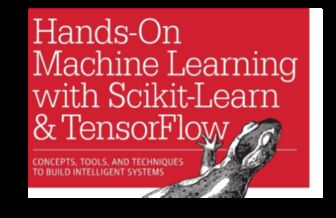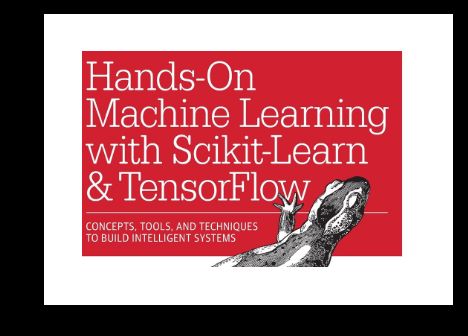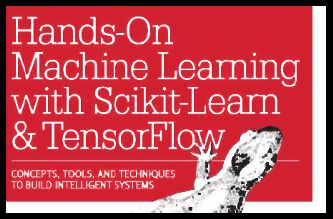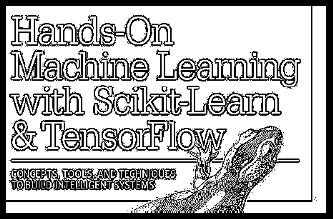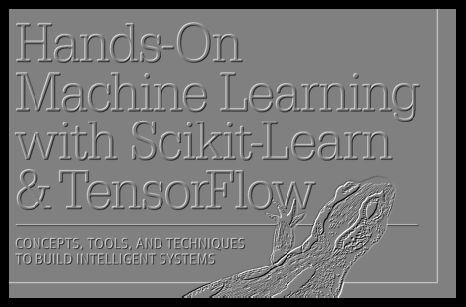For OCR | 基于 OpenCV 的图像预处理
![]()
欢迎关注 “小白玩转Python”,发现更多 “有趣”
如果你的图像有随机噪声,不均匀的光照,前面的物体上的洞,等等。在将图片发布到计算机视觉 API 之前,有几件事情是你可以做的。在本文中,我们将介绍几种使用 OpenCV 提高 OCR 处理效果的技术。
安装 OpenCV
使用首选的包管理器安装 OpenCV
conda install -c conda-forge opencv
pip install opencv-python
读取图片
我将以我最喜欢的一本书的第一版的封面为例。让我们首先读取图像,指定要读取图像的颜色类型,这将读取图像的默认颜色格式为 OpenCV 中的 BGR (即蓝绿红)。然后我们将颜色空间转换为更常见的 RGB 顺序(为了可视化) ,最后,编写一个小函数来显示图像:
import cv2
import matplotlib.pyplot as plt
img = cv2.imread(
filename='hands-on-machine-learning.jpg',
flags=cv2.IMREAD_COLOR,
)
h, w, c = img.shape
print(f'Image shape: {h}H x {w}W x {c}C')
img = cv2.cvtColor(
src=img,
code=cv2.COLOR_BGR2RGB,
)
def show_image(img, **kwargs):
"""
Show an RGB numpy array of an image without any interpolation
"""
plt.subplot()
plt.axis('off')
plt.imshow(
X=img,
interpolation='none',
**kwargs
)
show_image(img)
裁剪图像
大多数情况下,您要么在文本周围有一个框坐标(来自标签工具) ,要么您只对图像的一部分感兴趣。我们的图像是一个 3D numpy 数组。要裁剪它,我们可以简单地沿着高度和宽度切片:
ymin, ymax = 200, 780
xmin, xmax = 100, 1000
img = img[
int(ymin): int(ymax),
int(xmin): int(xmax),
]
h, w, c = img.shape
print(f'Image shape: {h}H x {w}W x {c}C')
show_image(img)
扩充边界
这对于使用针对文档进行 OCR 模型训练的 API (文档通常有白色边框)可能很有用
img_border = cv2.copyMakeBorder(
src=img,
top=10,
bottom=10,
left=10,
right=10,
borderType=cv2.BORDER_CONSTANT,
value=(255, 255, 255),
)
h, w, c = img_border.shape
print(f'Image shape: {h}H x {w}W x {c}C')
show_image(img_border)
调整图像大小
API 将为输入图像设置一个最大尺寸。如果图像需要调整大小,应该保留长宽比
MAX_PIX = 800
def resize_image(img, flag):
"""
Resize an RGB numpy array of an image, either along the height or the width, and keep its aspect ratio. Show restult.
"""
h, w, c = img.shape
if flag == 'h':
dsize = (int((MAX_PIX * w) / h), int(MAX_PIX))
else:
dsize = (int(MAX_PIX), int((MAX_PIX * h) / w))
img_resized = cv2.resize(
src=img,
dsize=dsize,
interpolation=cv2.INTER_CUBIC,
)
h, w, c = img_resized.shape
print(f'Image shape: {h}H x {w}W x {c}C')
show_image(img_resized)
return img_resized
if h > MAX_PIX:
img_resized = resize_image(img, 'h')
if w > MAX_PIX:
img_resized = resize_image(img, 'w')
图像形态学操作
Opening:腐蚀后使用 5×5 的内核膨胀操作,有助于消除噪声
Closing:膨胀后使用 5×5 的内核腐蚀操作,以用来堵住小洞
def apply_morphology(img, method):
"""
Apply a morphological operation, either opening (i.e. erosion followed by dilation) or closing (i.e. dilation followed by erosion). Show result.
"""
if method == 'open':
op = cv2.MORPH_OPEN
elif method == 'close':
op = cv2.MORPH_CLOSE
img_morphology = cv2.morphologyEx(
src=img,
op=op,
kernel=np.ones((5, 5), np.uint8),
)
show_image(img_morphology)
return img_morphology
高斯模糊操作
图像模糊(又名平滑)是有用的消除高频(如噪声)的操作。注意,内核越大,模糊效果越差。
img_gaussian = cv2.GaussianBlur(
src=img,
ksize=(5, 5),
sigmaX=0,
sigmaY=0,
)
自适应阈值操作
阈值化将灰度图像转换为二值图像。自适应阈值是有用的时候,图像有不同的照明条件在不同的地区,因为它计算不同的阈值不同的区域。
下面的函数使用以下两种方法中的一种来自适应阈值化:
高斯:阈值是邻域值的加权和,其中权重是一个高斯窗口
平均值:阈值是邻域面积的平均值
def apply_adaptive_threshold(img, method):
"""
Apply adaptive thresholding, either Gaussian (threshold value is the weighted sum of neighbourhood values where weights are a Gaussian window) or mean (threshold value is the mean of neighbourhood area). Show result.
"""
img = cv2.cvtColor(
src=img,
code=cv2.COLOR_RGB2GRAY,
)
if method == 'gaussian':
adaptive_method = cv2.ADAPTIVE_THRESH_GAUSSIAN_C
elif method == 'mean':
adaptive_method = cv2.ADAPTIVE_THRESH_MEAN_C
img_adaptive = cv2.adaptiveThreshold(
src=img,
maxValue=255,
adaptiveMethod=adaptive_method,
thresholdType=cv2.THRESH_BINARY,
blockSize=11,
C=2,
)
show_image(img_adaptive, cmap='gray')
return img_adaptive
Sobel 滤波器操作
Sobel 算子结合了高斯平滑和微分(图像沿 x 或 y 的一阶导数)。它们有助于检测水平或垂直边缘,并能抵抗噪声。为了检测水平和垂直边缘,我们可以沿着 x 和 y 分别使用 Sobel 滤波器操作,然后查看结果。
def apply_sobel(img, direction):
img = cv2.cvtColor(
src=img,
code=cv2.COLOR_RGB2GRAY,
)
if direction == 'h':
dx, dy = 0, 1
elif direction == 'v':
dx, dy = 1, 0
img_sobel = cv2.Sobel(
src=img,
ddepth=cv2.CV_64F,
dx=dx,
dy=dy,
ksize=5,
)
return img_sobel
拉普拉斯滤波器操作
与 Sobel 算子类似,拉普拉斯算子使用微分进行处理。但是,他们使用图像沿 x 和 y 的二阶导数(通过内部加上使用 Sobel 算子计算的二阶 x 和 y 导数)。拉普拉斯算子用于检测边缘(以及其他二阶导数为0的可能无意义的位置,所以它们应该只适用于需要的地方)。
def apply_laplacian(img):
img = cv2.cvtColor(
src=img,
code=cv2.COLOR_RGB2GRAY,
)
img_laplacian = np.uint8(
np.absolute(
cv2.Laplacian(
src=img,
ddepth=cv2.CV_64F,
)
)
)
show_image(img_laplacian, cmap='gray')
return img_laplacian
其他代码
最后,当你的图像中有一些不同区域的框坐标时(例如,你使用了一个标签工具来标注标题、副标题、作者等) ,你不希望: 裁剪每个区域 > 保存裁剪后的图像本地 > 使用本地图像发布一个 API 请求,因为这会拖慢你的速度。
为了解决这个问题,您可以改为:裁剪每个区域 > 编码裁剪图像到内存缓冲区 > 后请求使用内存缓冲区中的图像,这比第一种方法更快。
下面展示了如何将图像编码到 buffer 中,然后使用 buffer 为 OCR 请求准备好数据(以及如果需要的话如何将图像解码回来) :
_, buf = cv2.imencode(
ext=".jpg",
img=img,
)
data = buf.tostring()
img = cv2.imdecode(
buf=buf,
flags=cv2.IMREAD_UNCHANGED,
)
· END ·
HAPPY LIFE


